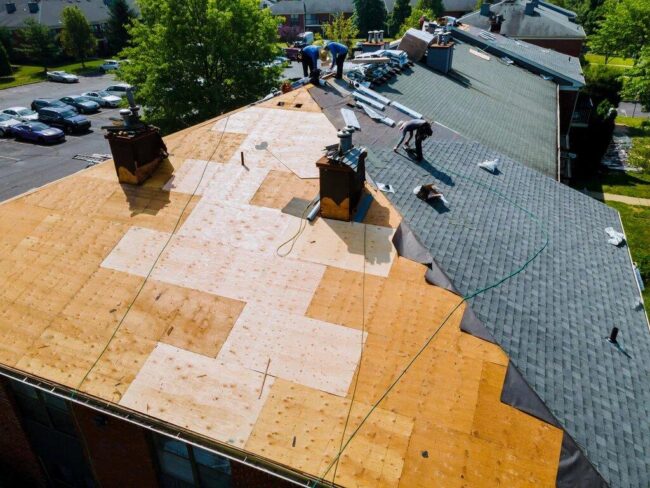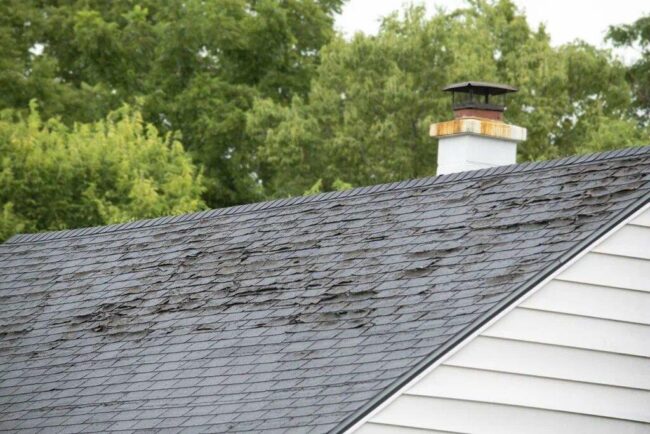Every homeowner knows that the roof is a crucial part of their house. It protects us from rain, snow, sun, and wind. However, roofs don’t last forever. Eventually, every roof will need to be upgraded or replaced. The question is, when is the best time to upgrade an old roofing system?
In this article, we will explore when to consider an upgrade, the signs that indicate a roof replacement might be necessary, and the best time of year to tackle this important home improvement.

Why Upgrading Your Roof is Important
Upgrading your roof isn’t just about fixing problems, it’s about preventing them. An old or damaged roof can lead to a multitude of costly and potentially disastrous consequences. To know the right time to upgrade your roofing system, it helps to understand how long different types of roofs last. Most asphalt shingle roofs typically last between 15 to 30 years, while metal roofs can last 40 years or more. Other options, like tile roofs, can even last for 50 years or longer.
Every roofing material has its advantages and longevity. Knowing the lifespan of your current roofing system can give you a better idea of when you might need to plan for an upgrade. A good roof may last a long time, but factors like weather, maintenance, and quality of installation play massive roles in how long your roof will truly last.
What Are the Signs That Your Roof Needs an Upgrade?
It can be difficult to decide if it’s time to upgrade your roof. Here are some key signs to look for that indicate an upgrade might be needed:
1. Age of the Roof
Most roofing materials, such as asphalt shingles, have a lifespan of about 20–25 years. An outdated or damaged roof often contributes to heat loss, resulting in higher energy bills. The U.S. Department of Energy estimates that homeowners can save between 10% to 40% on heating and cooling costs by upgrading to a new, energy-efficient roof.
If your roof is older than this, it may no longer provide adequate protection. Even if there are no visible signs of damage, an aging roof is more prone to leaks, cracks, and deterioration.
2. Frequent Leaks and Water Damage
If you notice water stains on your ceilings or walls, your roof might be leaking. Water damage can lead to mold growth, weakening your home’s structure and affecting indoor air quality. Addressing this issue promptly by upgrading your roof can prevent further damage.
3. Missing or Damaged Shingles
Strong winds, heavy rain, and constant sun exposure can cause shingles to crack, curl, or fall off. If you see missing or broken shingles, your roof’s ability to shield your home from the elements is compromised, making an upgrade necessary.
4. Sagging Roof Structure
A sagging roof can indicate structural damage, which might be caused by prolonged moisture exposure, poor installation, or excessive weight on the roof. This is a serious issue that requires immediate attention and possibly a full roof replacement.
5. Rising Energy Bills
An old or damaged roof can allow heat and cold air to escape, making your HVAC system work harder to regulate indoor temperatures. If your energy bills have been rising without explanation, your roof’s insulation might be failing, signaling the need for an upgrade.

When is the Best Time to Upgrade an Old Roofing System?
The best time to upgrade an old roofing system depends on various factors, including the age and condition of your roof, the climate in your area, and your budget. Generally, spring and summer are considered the best times for a roof upgrade, as the mild and dry weather makes it easier for roofers to work on your roof, preventing damage from heavy rainfall and extreme temperatures.
Fall is also a good option, offering similar weather conditions that facilitate roofing work, while also helping to prevent damage from heavy snowfall and extreme temperatures during the winter months. When upgrading, selecting a professional and experienced roofing company in South Florida, like West Palm Beach Roofing Company, is essential for a successful upgrade. They can assess your current roof, recommend the best materials, and ensure proper installation for long-lasting results.
What are the Benefits of Upgrading an Old Roofing System
Upgrading an old roofing system can have numerous benefits for homeowners, including improved safety by protecting your home from the elements and preventing accidents caused by faulty materials. Investing in a new roof can significantly boost a home’s resale value. A 2022 study found that homeowners could expect their property’s value to increase by an average of $18,780 after replacing the roof. Additionally, new roofing systems are designed to be energy-efficient, reducing energy bills and saving you money in the long run.
A new roof can also enhance your home’s curb appeal, making it more attractive to potential buyers, and even increase your property value, making it more valuable if you decide to sell in the future.
Conclusion
Upgrading your old roofing system at the right time can prevent costly repairs, enhance your home’s energy efficiency, and improve overall safety. If your roof is aging, leaking, or showing signs of wear, don’t wait until major damage occurs. Consulting a trusted roofing expert can help you determine the best time and approach for a seamless upgrade.
